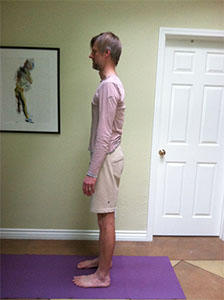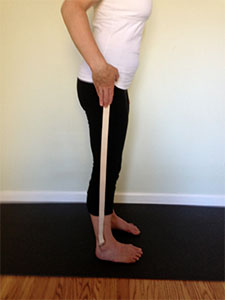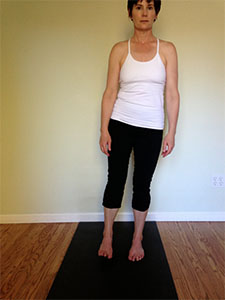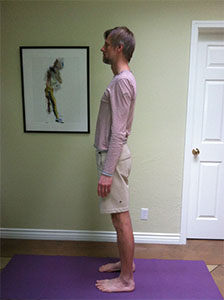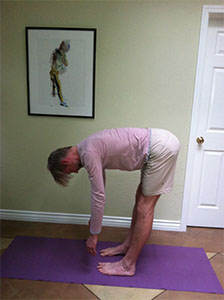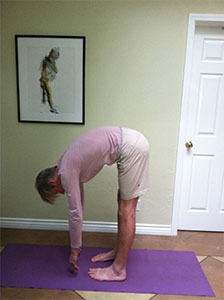Why WALKING May Be THE Most Important Weight Bearing Exercise
Older adults often hear in the media or from their doctors that they need to do more weight bearing exercise for long term health. Weight bearing exercise (WBE) has been shown in studies to improve bone density, mostly in patients with osteoporosis, and there is evidence to suggest that it can also help with balance and muscle strength.
I spend much of my time working with the very people who hear this recommendation the most, and I often get insights into how these clients interpret it. My impression is that usually when a client hears “weight-bearing exercise” they think of weight training or exercises that involve the use of external weights.
Does Weight-Bearing Exercise Mean Lifting Weights?
Do we need to be lifting weights for health and longevity? I’m not really sure that’s the case. Lifting weights, while potentially valuable for some, can be problematic for many others, and often problematic for the very people who are told to do more weight-bearing. Perhaps if we were to better understand exactly what WBE is, each of us might better understand what exercises are best for us to do and how we should do them.
Let’s consider first a basic definition of weight-bearing I found in the NIH Library of Medicine:
“Weight-bearing is any activity that one performs on one or both feet. It requires that one carry bodyweight on at least one lower extremity. Weight-bearing is an activity that the skeletal system does against gravity.”
Notice that it says nothing here about lifting weights. Weight-bearing, and the exercises that employ it, are simply activities that we do that load our skeletal system against gravity. In fact, I’d argue that exercises that train us to manage our own body weight more effectively and don’t involve adding any additional weight are much more important, crucial really, to our health and function, than those that do.
Don’t get me wrong. I see a lot of value in weight-training, especially for athletes or anyone needing or wanting to build strength for a particular sport or a physically demanding activity. Weight-training is also fine for someone who simply wants to get stronger for the sake of being so.
What I’m saying here is that we don’t need to weight-train to have the necessary strength to be high functioning human beings. However, we DO need to do exercises or activities that involve weight-bearing, and we DO need to do them in the RIGHT way if we want to enjoy their benefits.
So what is the RIGHT way to do WBE? Before we get into that, let’s look at why WBE is recommended in the first place.
Weight-Bearing Exercise and Bone Health
Most of the research supporting the value of WBE centers on bone health. Studies consistently show that people who do WBE can improve their bone mass, and people who do not do WBE rarely if ever do. Bone mass is important for obvious reasons. We rely on our bones for support and stability. If the quality of our bone tissue degrades, we are prone to fractures and all of the challenges that go along with them, including a sometimes fatal loss of strength and mobility.
If you’ve ever had a DEXA scan to assess your bone density, you already know that your bone density is not the same throughout your body. If there is lower than optimal bone density somewhere in your body, there will also be normal bone density in other places. One of the places where bone density is often not normal and frequently deficient is in the hip, particularly in the neck of the femur.
If you’ve developed osteopenia or osteoporosis in the neck of my femur, you may improve your bone density by doing WBE. In fact, it’s very likely that you’re already doing the most important WBE you need to do that already, and have been doing it for nearly your entire life. Can you guess what it is?
Walking May Be THE Most Important Weight-Bearing Exercise
The weight-bearing activity that nearly all of us do and do daily is walking. When we walk, we bear our full body weight on our hips, legs and feet. Walking also provides the essential mechanism by which we load our femur bones (thigh bones), and this loading is essential for their health.
Theoretically, if I place my full weight on my femur bones, and I do so with sufficient frequency, I will establish and maintain the necessary bone density I need there, even without doing any other exercises to maintain it. But if that’s the case, why is it that the neck of the femur is one of the places where bone loss is most common? The reason is that while we may be walking, we’re likely not walking in the right way – the way that would otherwise maintain a healthy bone density in this and other parts of the body.
To understand why this is the case, we need to first understand the mechanism by which weight-bearing increases bone density. Our bones have specialized cells called osteoblasts. These cells, when stimulated in a particular way, produce more bone cells and this in turn increases and/or maintains our bone density.
The stimulation these cells need to produce more bone tissue is compression. By placing weight on a bone, the bone tissue is slightly compressed by the weight, and that compression stimulates the osteoblasts in the bone to produce more bone tissue and fill in any gaps in the strength giving matrix our bone tissue forms.
But for compression to happen, the bone needs more than just weight on it. It needs to be loaded relative to gravity, meaning vertically relative to the length of the bone. IOW, I can’t sit on my sofa and put heavy weights on my thighs for a period of time and expect my bone density to increase. Not that you’d do that (would you?). Instead I need to stand up from time to time and align my femurs straight up and down while I put my weight on them, preferably one at a time.
It sounds simple enough but the evidence suggests that many of us aren’t doing this. There are a few reasons why, the primary one being that when most of us stand, our femurs are not aligned vertically. Therefore, when we put our weight on them, we are not compressing the bone in the way necessary to stimulate its growth. Instead we are placing a rotational torque on the bone and unintentionally directing that torque into the soft tissue in our hips, into our knee joints and into our forefeet and toes.
This is not a recipe for a good outcome. Should we go to the gym and add even more weight to this scenario? Clearly the thing we need to do first is correct the alignment issue. Once we do that, then standing up will properly load our femurs and stimulate the growth of the tissue in them. Then once we’ve corrected the alignment issue, then adding more weight might be helpful.
And once we’ve corrected our standing alignment, why not head out and go for a nice long walk so we can keep stimulating our bone growth? Again, seems simple enough, just as long as we can maintain the optimal alignment we’ve achieved standing while moving, which, it turns out, is trickier that you might think.
Why a Functional Gait is Essential
This is where training gait mechanics comes in. My experience has shown me that, even though it’s not always easy, we can improve our gait mechanics, and when we do so we regain an essential mechanism by which we can improve and maintain our bone health, not to mention reduce stress on our hips, knees and feet.
And walking has the potential to do much more for us than just improve our bone health. It can also be excellent for improving muscle strength and balance, two other areas where research has shown WBE to help.
When we walk with a functional gait, we work some of the strongest muscles in our body – those residing along the back of our legs and hips. Muscles such as our hamstrings and our gluteal muscles get stronger when we walk with a healthy gait, and when these musics get stronger, they also keep us more stable when standing and more mobile when transitioning to sitting, a motion that’s frequently compromised in people with balance issues.
As we look deeper into the benefits walking, a weight-bearing exercise that requires no extra weight and no equipment outside of a decent pair of shoes, it’s extraordinary just how much it can offer us in the way of tissue health, improved strength and enhanced mobility. Considering the substantial cardiovascular benefits walking also provides, we might argue that walking is the perfect exercise.
Provided that is, you do it in the right way.

